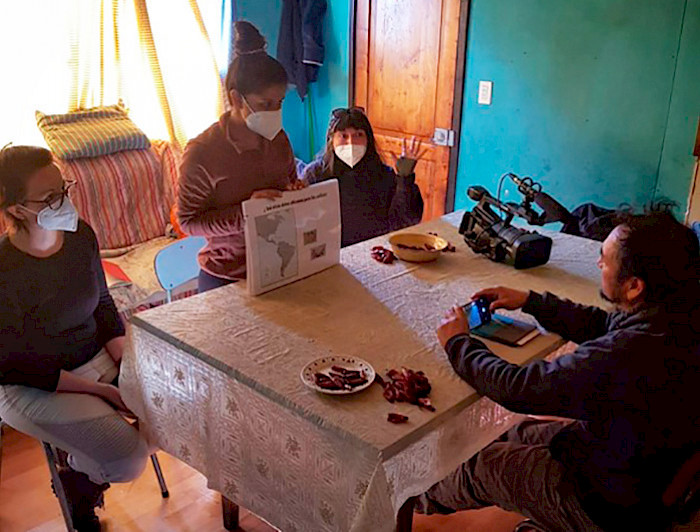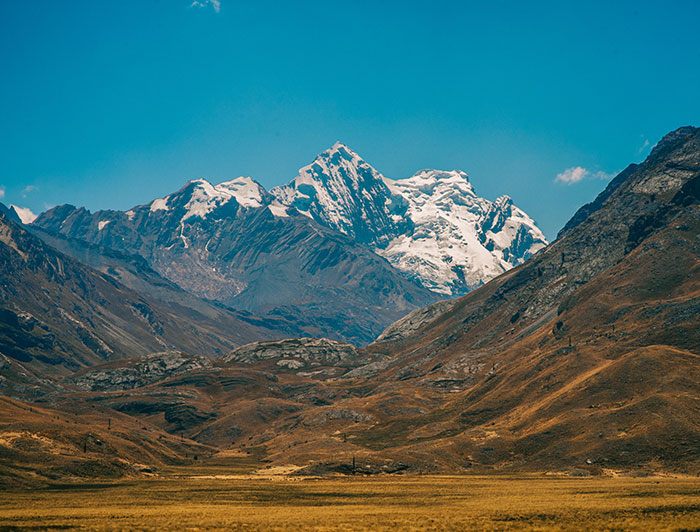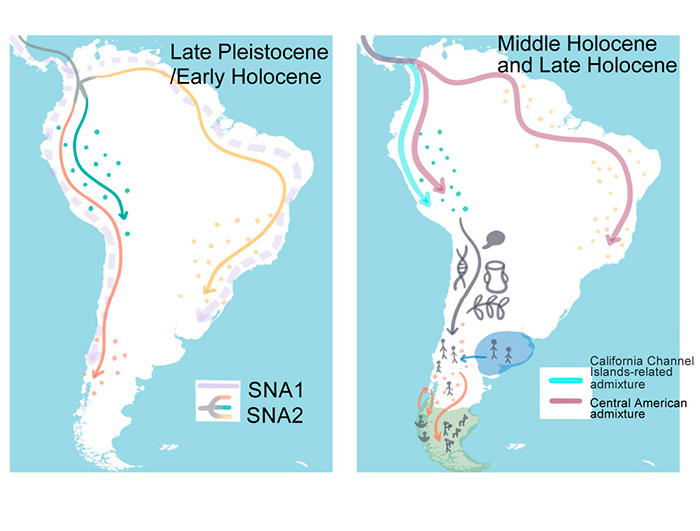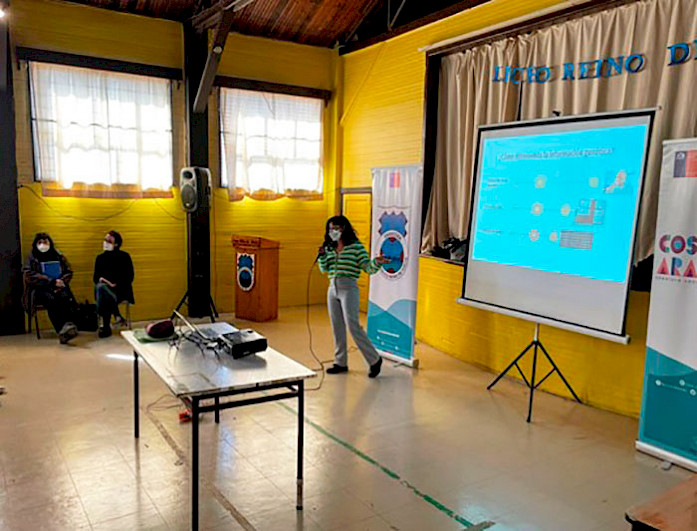Unveiling the Origins of the Mapuche: Genetics and Language Provide Clues
South America was the last corner of the continent to be populated. Who are its ancestors? How did they interact with each other? These questions have been raised by an international team, including the UC Chile School of Anthropology and Center for Intercultural and Indigenous Research (CIIR), in their pursuit to uncover the origins of the Mapuche, Chile's largest indigenous community.

photo_camera A research team led by the University of Zurich (UZH), in collaboration with Universidad Católica and the Max Planck Institute for Evolutionary Anthropology in Leipzig, studied the genetic ancestry of the Mapuche people along with linguistic, archaeological, and historical data. (Photo credit: UC Chile School of Anthropology)
About 15,000 years ago, the first migrants who colonized South America rapidly moved from the northern part of the continent during the Late Pleistocene. This is evidenced by the earliest traces of human presence in what is now central-southern Chile.
However, there are still many aspects that remain unknown, such as the exact routes followed by these groups or how they interacted with each other. Shedding light on these missing links, a new study delves into indigenous ancestries, underscoring the profound pre-Hispanic foundations in America.
The University of Zurich (UZH), in partnership with UC Chile and the Max Planck Institute for Evolutionary Anthropology in Leipzig, spearheaded a research team that examined the genetic ancestry of the Mapuche people, supplemented by linguistic, archaeological, and historical data. Their findings were recently published in the journal Cell Biology: “The genetic history of the Southern Andes from present-day Mapuche ancestry”.
As explained by Epifanía Arango-Isaza, a doctoral student at UZH and the lead author of the study: "We compared the genetic profile of participants with Mapuche ancestry with data from many other populations in the Americas, including ancient DNA from archaeological excavations. The genetic ancestry of the Mapuche is typical of the Southern Cone, the southernmost part of the continent, but has been underrepresented in genetic and historical studies until now."
He added: "Other major genetic lineages in South America are those of the central Andes and the Amazon. Over 4,000 years ago, the ancestors of the Mapuche diverged from the inhabitants of the southernmost region, distinct from the subsequent migratory waves from the north that extended to the central Andes and certain areas of the Amazon."
"The study validates the long-standing ancestral heritage of the Mapuche in our region, which spans millennia on this side of the mountain range", said Felipe Martínez, co-author of the study and director of the UC Chile School of Anthropology and researcher at the Center for Intercultural and Indigenous Studies, CIIR. "It is important not to confuse this signal of genetic ancestry with culture and identity as we know them today." “Genetics does not define or determine those elements.”
The Andes as a Connecting Force

European ethnographers and linguists often perceived the Andes, the largest mountain range in both the continent and the world, as a uniform and interconnected cultural entity. However, the ancient relationships between Andean populations now appear more nuanced.
Chiara Barbieri, a researcher at UZH and also a lead author, stated: "We see that distinct Mapuche lineages originated locally and have remained relatively isolated. This overall isolation has been disrupted by episodes of contact with other South American populations over the past millennium."
"The main genetic link is with the central Andes, reflecting how domesticated crops, such as the potato, also spread southward, as well as a handful of loanwords from Quechua to Mapudungun, the language of the Mapuche," added Paul Heggarty, a linguist from the Max Planck Institute for Evolutionary Anthropology and co-author of the study.
This contact could date back to before the contact with the Inca Empire.
Other specific connections point southward to the southernmost end of the Andes. "Our findings revealed that various territorial identities of the Mapuche—the Pehuenche from the Andes, the Lafkenche from the coast, and the Huilliche from Chiloé Island—are interconnected. However, the Huilliche still exhibit genetic remnants of contact with the southernmost region. This could be a signature of genetic structure originating from other groups known as the Chono, who once inhabited Chiloé," explains Kentaro Shimizu, a genetics professor at UZH who also participated in the research.
Roberto Campbell, an archaeologist and faculty member from the School of Anthropology at UC Chile, comments that the work "demonstrates the incredible potential of interdisciplinary studies to understand our past history. This approach has also been applied, as seen in Europe, to investigate the origins of Indo-European peoples by integrating multiple disciplines such as archaeology, linguistics, genetics, and other related fields.”

Community Narratives

The research generated genomic data from 64 participants belonging to three Mapuche populations in southern Chile: Pehuenche, Lafkenche, and Huilliche.
Additionally, the fieldwork involved bringing these results back to the indigenous communities to contextualize the genetic narrative alongside their knowledge and perspectives.
"The traditional narratives and reports convey a profound legacy of Mapuche culture in the region. Our work holds value for the participants as it contributes to their sense of representation", said María José Aninao, a Mapuche linguist and co-author of the study.
As Chiara Barbieri concluded: "We have captured the process of discussing the results with the participants and cultural representatives, which has been recorded in a ready-to-distribute documentary. Through this medium, our goal is to elucidate the intricacies of contemporary indigenous identities, drawing from insightful conversations with individuals in Chile who possess Mapuche ancestry or self-identify as Mapuche."
"These findings offer fresh perspectives on the genetic (pre)history of South America, spanning from the early stages of settlement to the enduring presence of indigenous communities in the present day."


